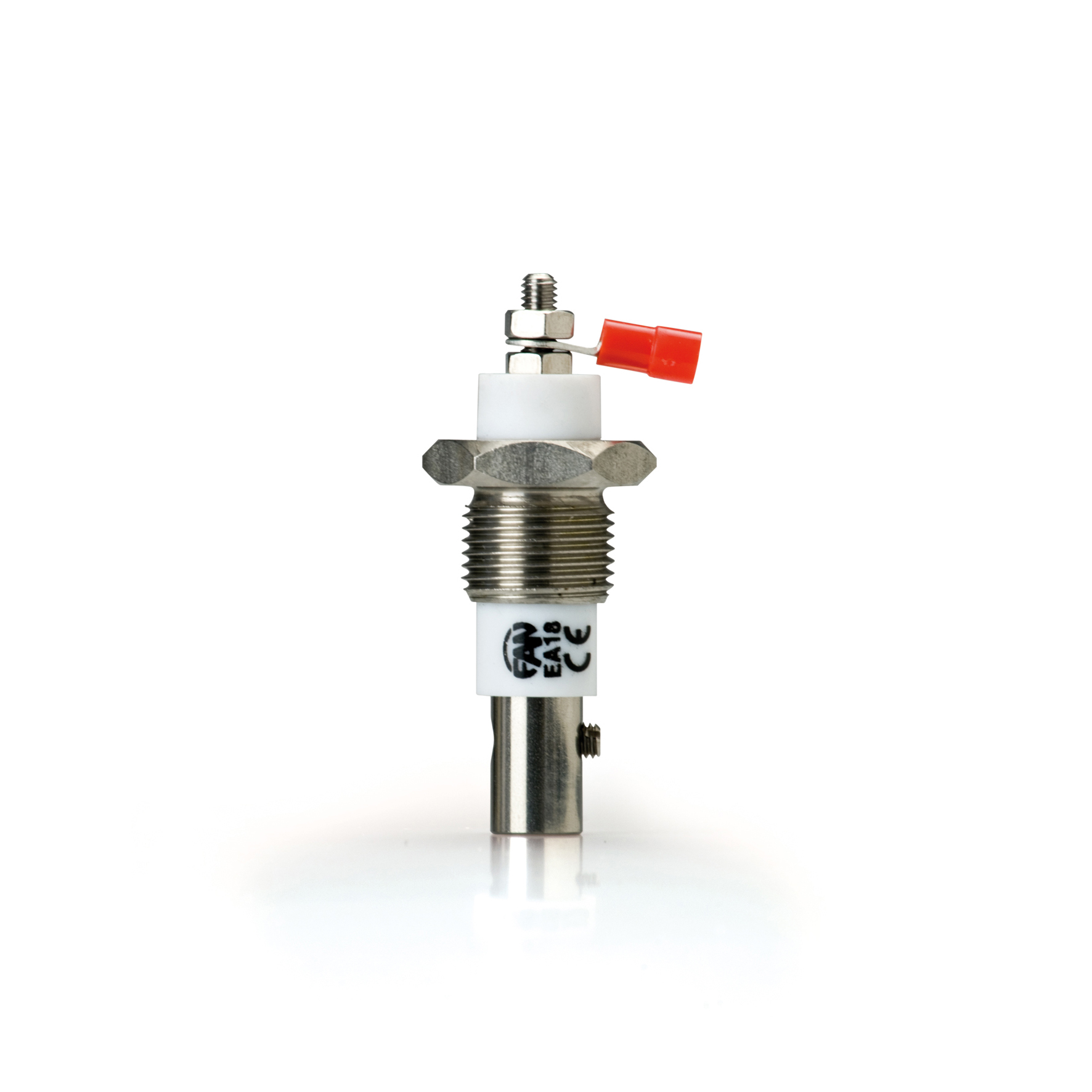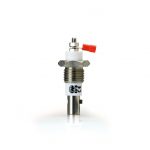Liquid survey electrode holders probe for electronic level controls
-
DESCRIPTION
General features0
Electronic level controls with probes for conductive liquid
EA18 – AISI 303 stainless steel probe
- Maximum operating pressure 10 bar.
- Maximum temperature 160°C.
- Connection male G 3/8″ (electrode not included).
- Weight 48 gr.
- Connection between the probe and the level control is realized through a single-pole flexible cable (not supplied).
- Electrode probe is not supplied
EA19 – Ballasted PVC probe with electrode
- Operation at atmospheric pressure.
- Maximum operating temperature 80°C.
- Stainless steel electrode AISI 303 (included)
- Cable gland G 1/4″
- Connection cable 1×1,5mm2 (not included)
- Weight 57 gr.
- Connection between the probe and the level control is realized through a single-pole flexible cable (not supplied).
EA20 – AISI 303 stainless steel probe
- Maximum operating pressure 35 bar.
- Maximum temperature 250°C.
- Connection male G 3/8″(electrode not included).
- Weight 88gr.
- Connection between the probe and the level control is realized through a single-pole flexible cable (not supplied).
- Electrode probe is not supplied.
EA21 – Ballasted PVC probe with electrode
- Suitable for wells at ambient pressure.
- Maximum temperature 50°C.
- Cable length 6 metres (electrode included in the probe).
- AISI 316 stainless steel electrode.
- Weight 350gr.
- Connection between the probe and the level control is realized through a single-pole flexible cable (6 mt).
-
ADVANTAGES
0
Electronic level controls with probes for conductive liquid
Advantages -
TECHNICAL SPECIFICATION
CODE DESCRIPTION MAXIMUM TEMPERATURE EA18 stainless steel probe AISI 303, 10 bar (without electrode) 160 °C EA19 ballasted PVC probe with electrode (cable not icluded) 80°C EA20 stainless steel probe AISI 303, 35 bar (without electrode) 250 °C EA21 ballasted PVC probe with electrode and 6mt cable 50 °C 2013347 stainless steel electrode - 1mt. length - 2013348 stainless steel electrode - 2mt. length - -
HOMOLOGATION AND INSTALLATION
HomologationInstallation and use
- TECHNICAL LITERATURE
-
FAQS






